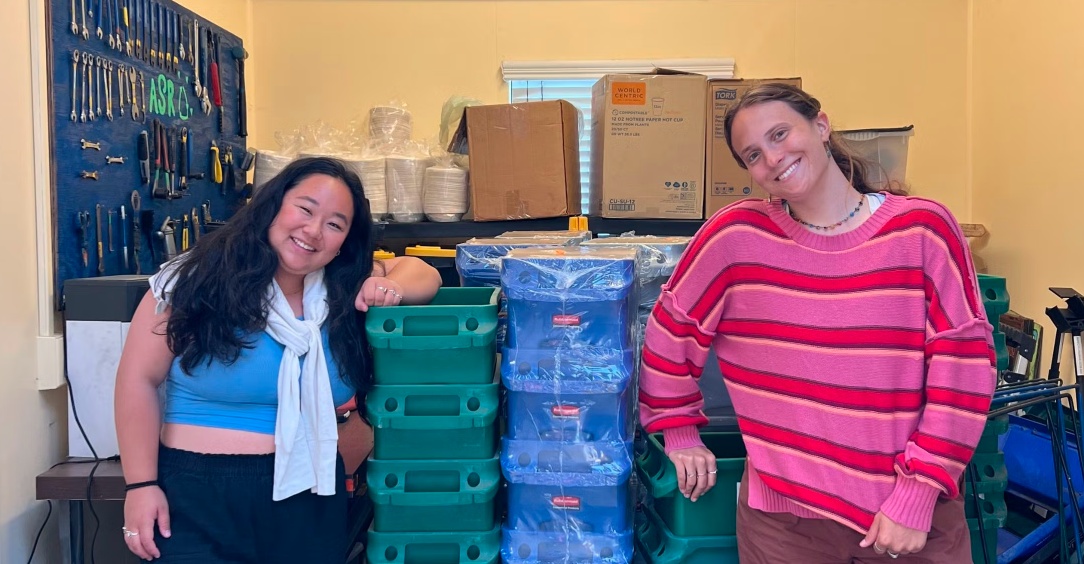Breaking the Laboratory’s Waste Plastic Dilemma: University of California Builds Campus Plastic Recycling Ecosystem
On August 7, Plastics Vision reported that at the University of California, Santa Barbara (UCSB), a student-led plastic recycling innovation is quietly taking shape in research laboratories. Kaili Mikami, a senior majoring in Environmental Studies, and her classmate Lauren Buyalos, who studies Aquatic Biology, are transforming plastic waste from campus labs into recyclable resources through the "Facility Lab Optimization and Waste Management Program" (FLOW), providing an innovative solution to the challenge of managing research waste.
By participating in the Environmental Leadership Incubator (ELI) program, two students discovered a critical limitation of the mechanical sorting system at the Tajiguas Landfill in Santa Barbara County: all plastic items smaller than six inches are deemed non-recyclable, including common laboratory items such as centrifuge tubes, pipette tips, and petri dishes. This standard results in a large amount of research waste being directly sent to the landfill, even though some plastics are labeled with recyclable numbers and still cannot avoid this fate.

To break the deadlock, the FLOW team partnered with "Art From Scrap," a program under the local nonprofit organization Explore Ecology. Through this platform, clean plastic waste collected from UCSB laboratories is reprocessed into art creation materials and supplied to local schools, artists, and community projects. This model extends the lifecycle of plastic and reduces the consumption of raw resources.
During on-site investigations, the project team identified three major issues commonly found in campus laboratories: lack of dedicated recycling containers, absence of classification labels, and insufficient multilingual instructions. In response, the team secured funding through the Facilities Management Department, the Undergraduate Research Fund (UCRA), and the Green Initiative Fund (TGIF) to install 36 sets of classified recycling stations across six laboratory buildings. They also designed and produced laboratory-specific recycling guides in Chinese, English, and Spanish. These visual labels provide detailed disposal guidelines for more than 20 common consumables such as centrifuge tubes, gloves, and packaging films.
To expand service coverage, the FLOW team collaborated with the campus student recycling association (AS Recycling) to develop a dedicated webpage integrating product guides, FAQs, and partner organization information. This platform not only provides researchers with real-time consultation channels but also promotes the establishment of standardized operating procedures across the entire campus through case sharing.
Elisa Halewood, head of the Microbial Oceanography Laboratory, pointed out: "Standardized labeling eliminates classification confusion, making every operational step a part of environmental practice." Jen Bowser, Sustainable Procurement Program Manager, emphasized that the project ensures the true circular value of eco-friendly consumables through "end-to-end management from procurement to final disposal." Currently, this model has been included in the campus waste management white paper, with plans to achieve full laboratory coverage across all campuses by 2026.
The student-driven recycling innovation not only provides a replicable solution for research waste management but also demonstrates the innovative power of the younger generation in restructuring the resource recycling system through interdisciplinary collaboration.
【Copyright and Disclaimer】The above information is collected and organized by PlastMatch. The copyright belongs to the original author. This article is reprinted for the purpose of providing more information, and it does not imply that PlastMatch endorses the views expressed in the article or guarantees its accuracy. If there are any errors in the source attribution or if your legitimate rights have been infringed, please contact us, and we will promptly correct or remove the content. If other media, websites, or individuals use the aforementioned content, they must clearly indicate the original source and origin of the work and assume legal responsibility on their own.
Most Popular
-

List Released! Mexico Announces 50% Tariff On 1,371 China Product Categories
-

EU Changes ELV Regulation Again: Recycled Plastic Content Dispute and Exclusion of Bio-Based Plastics
-

Mexico officially imposes tariffs on 1,400 chinese products, with rates up to 50%
-

Clariant Unveils Cost-Cutting Plan Details, Plans to Shut Down Multiple Plants
-

Nissan Cuts Production of New Leaf EV in Half Due to Battery Shortage






